ELAC B5.2 Debut 2.0 Series 5.25" Bookshelf Speakers by Andrew Jones
Build 5.2 | Sound 5.0 | DSP Sound 6.4 | score breakdown

You never get a second chance to make a first impression, that is unless you are Doc Jones. He is going back, back to the beginning, and giving a copy of my ELAC Debut B5 review to his past self. Here we are in the future and Dr. Andrew Jones has addressed just about every issue I raised in that review.
The Debut 2.0 was released last year, and there was a bit of a stink about the changes made. Here are some quotes from the man himself defending the new version from the unwashed masses of internet audio jockeys.
"One of my goals with the new versions was to address the issue of tweeter performance, both in terms of sound quality level but also in terms of sound balance with regard to the woofer. It can be argued that the tweeter level was a little subdued, particularly off axis due to the rather deep waveguide. Add to this listening with grille on, or if the speakers are not toed in, then it accounts for some listeners comments. So in the new version I have used a new dome/large roll surround diaphragm, enabling the tweeter to go both lower and higher in frequency. This necessitated a new waveguide, so I took the opportunity to try and widen the directivity a little. I also looked at the balance to the woofer, and raised the HF level a touch. It doesn't make the speaker sound bright as such, but it does open up the sound."
"There are, as usual, mixed opinions on the dustcap. Some people like it, some don't, so on average we have it about right! I changed it because it allowed me to smooth out the top end response of the woofer."
While I have no doubt the changes were done with good intentions, nobody likes to make a stinker. Lets run through the process and see if the forum golden ears have a leg to stand on, or if time travel can bring budget speaker goodness to this time stream.
Grill:
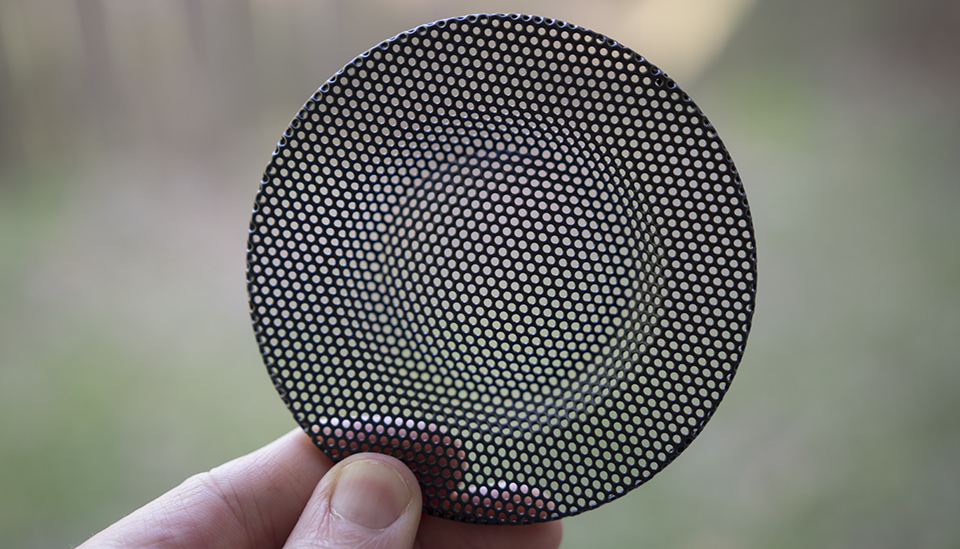
Grilling is still a priority for Jones, and after a recent visit to the local Best buy where I spotted to freshly mutilated Pioneer BS22's that had domes smashed, I have a new found respect for his reasoning. These tweeter grills look very similar to the original Debut series, but either I'm getting better at taking these off, or it is much easier. Two light prys with a paper clip and they were off.
Tweeter:
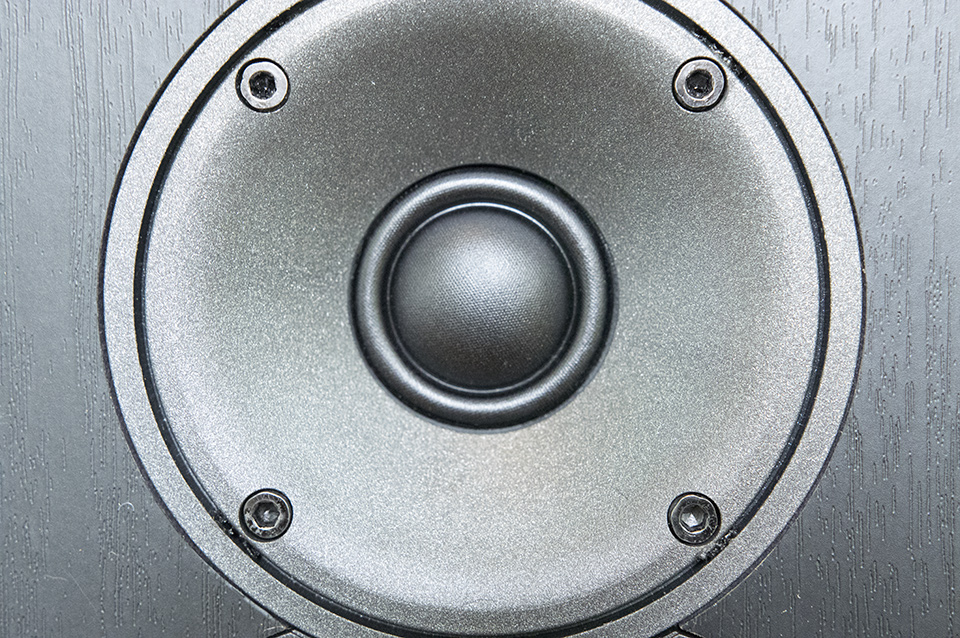
Tweeter is a nice looking unit using a 1 inch textured cloth, and a fat rolled surround which helps with smoother low frequency extension, useful for lower crossover points.
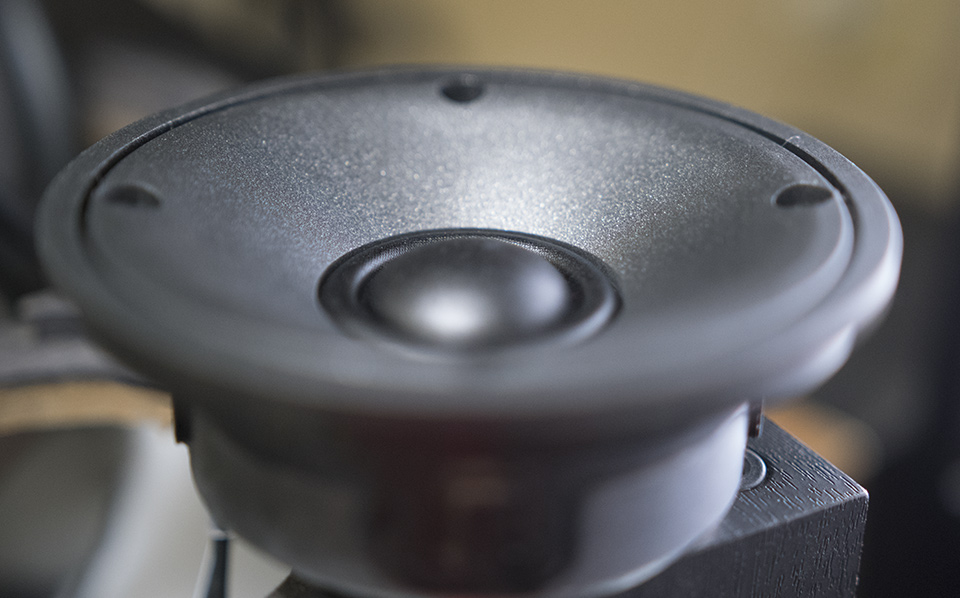
The waveguide on the ELAC B5.2 tweeter is not near as deep as on the previous iteration of the ELAC Debut. This will hopefully be a better match to the woofer, and open up the imaging with some useful early side wall reflections.
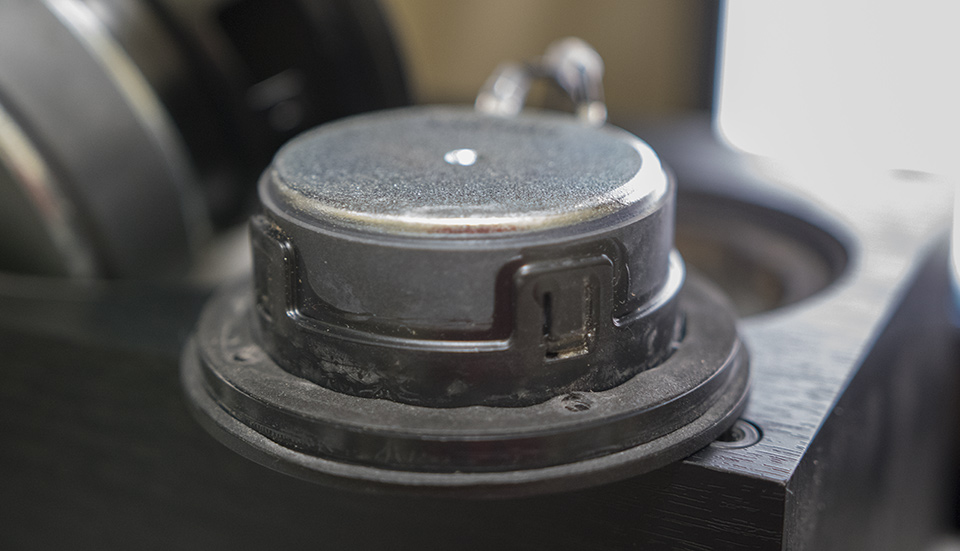
Here we can see this is not just a button magnet tweeter glued to a thin waveguide. This is a very large sold chunk of dense plastic expoxyed to a full size ceramic magnet - a proper tweeter with no backing magnet - there will be magnetic interference around the speakers, but almost nothing modern should have issues with this.
Woofer:
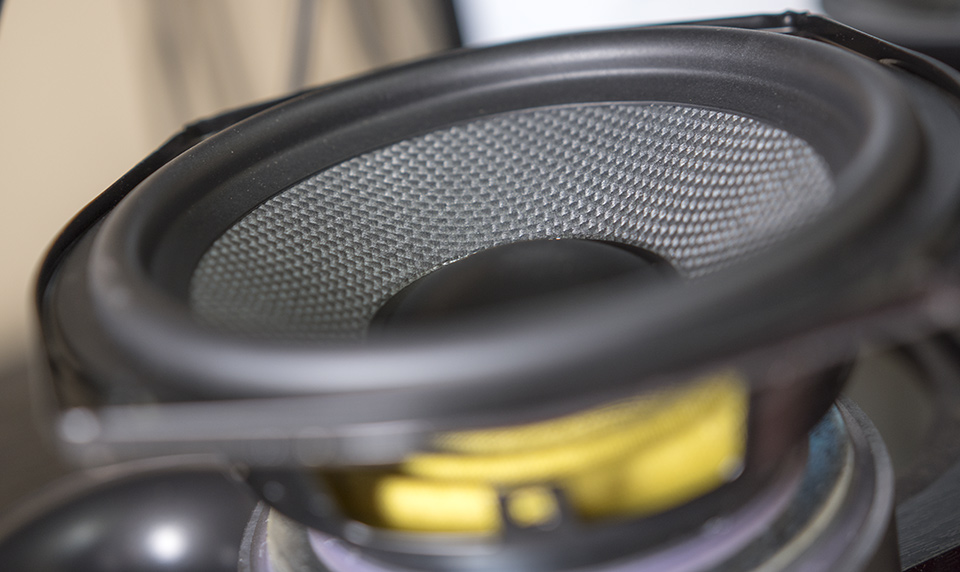
The B5.2's woofer looks very similar to the previous version with some tweaks. The surround is still pretty stiff, and the "aramid fiber" cone is now a lighter shade of gray. Big change here is the dust cap, something the design really needed. The prevous version had sound leaking through the oversized voicecoil vent and thin inverted dust cap. This cap is a kind of flexible, thin, maybe a little absorbent plasticy type material. So outside of helping the woofer properly disperse higher frequency sound, it also has the added benefit of avoiding nasty sounds leaking through from behind the woofer.
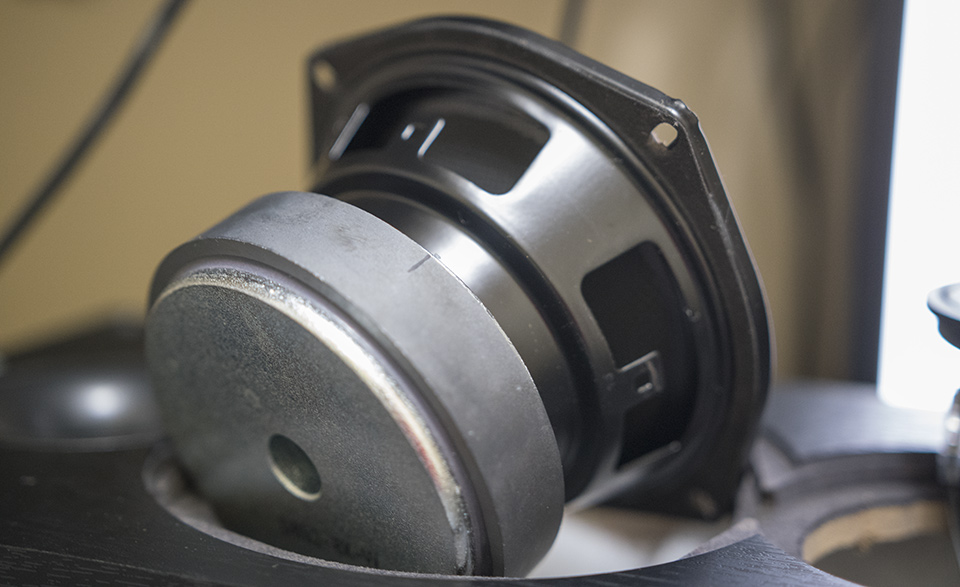
Motor and magnet structure still look good enough, and the stamped steal frame is really the only hint that this is a low priced driver. While many have poo pooed the aesthetic changes of the drivers in this speaker series, I find the changes to be mostly positive.
Crossover:
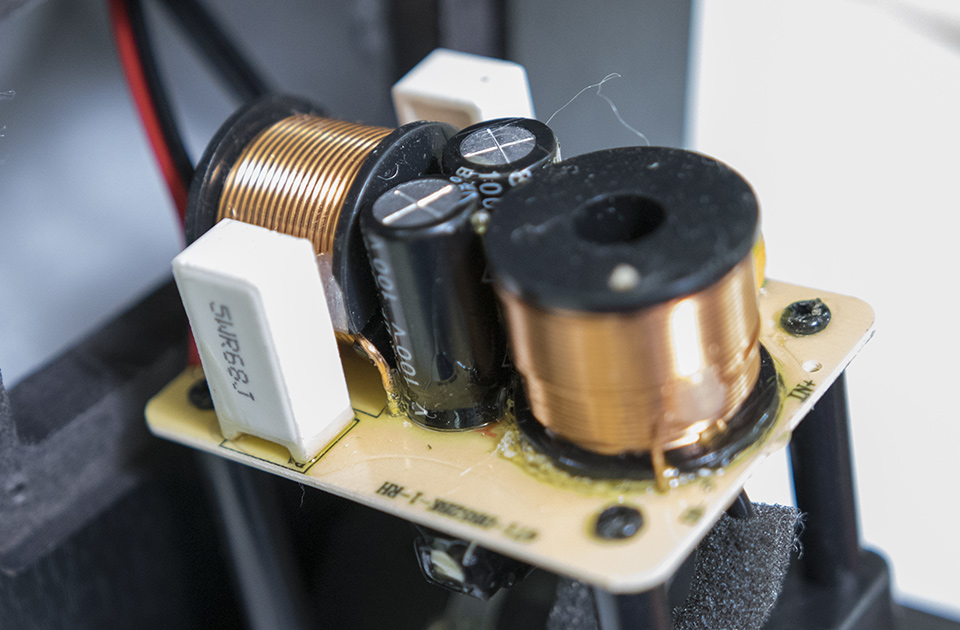
Crossover is similar in size, but just based on the size of the components I can guess the crossover point is maybe a hair lower. The air core inductors look a little larger, and one of the poly caps has been changed out for a pair of cheaper electrolytic. To make room for the bigger parts on the board the resistors have been swapped out for some with a vertical form factor.
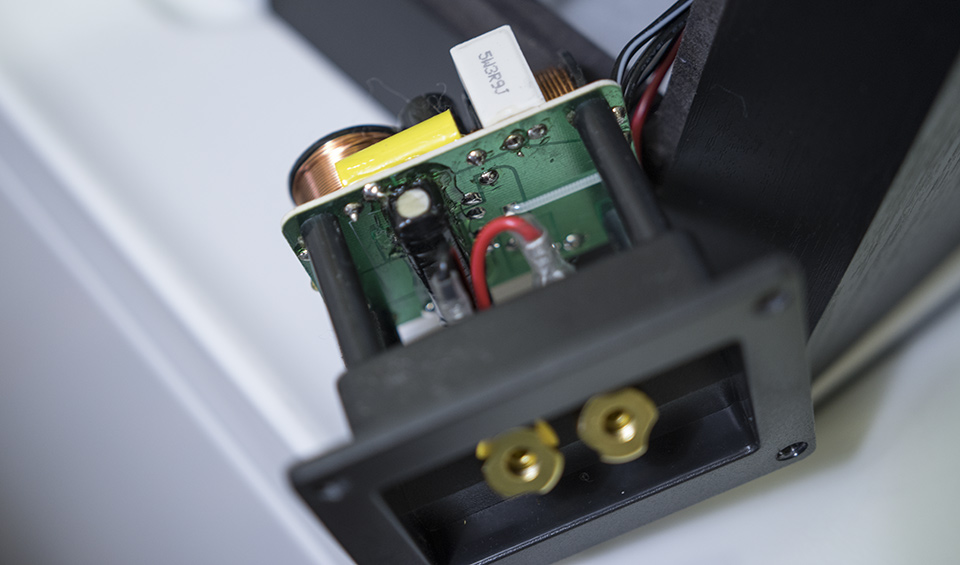
The iron core inductor is looking lonely on the bottom of the board.
Port:
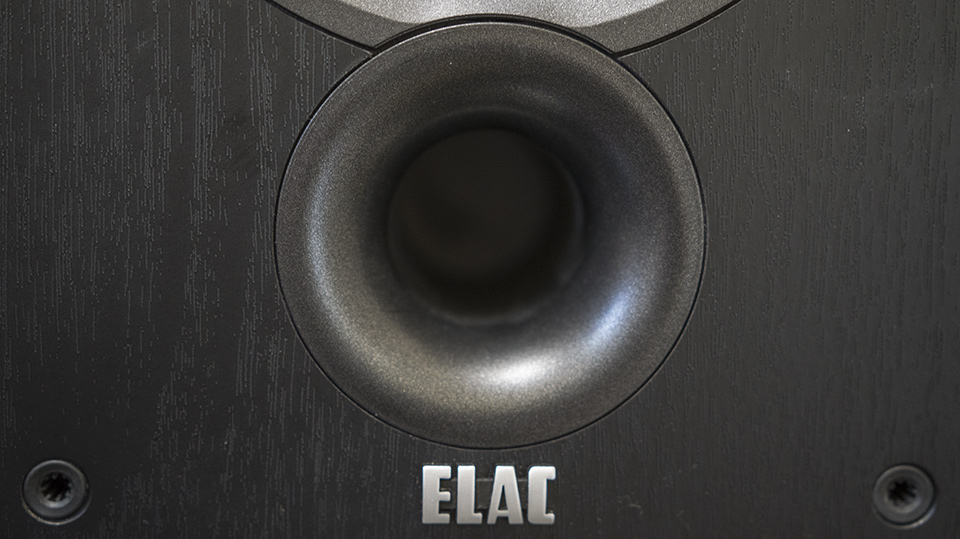
Out of all the changes made to the ELAC B5.2 speakers, the one I disapprove of is the front port. I've covered the downsides to this type of configuration many times, but I'll do it once more for the new visitors.
High frequency port leakage is more detectable, less reinforcement from rear boundary, port chuffing will be more audible, possible cancellation of bass and any leaking sounds - the port is out of the phase of the woofer if it's located on the front.
I can't think of a worse place acoustically for a port to be.
Cabinet:
Gone is the thick vinyl textured veneer that had a few durability issues, and instead there is a center brace, stiffer wood, and some nice enough veneer which looks similar to the kind used in low end Klipsch speakers.
I liked the innovation of the older box, using mushy materials means they don't resonate as bad, and it worked great. This return to a safe solution is a bit of a letdown, and I blame the customers who don't know how to take care of nice things.
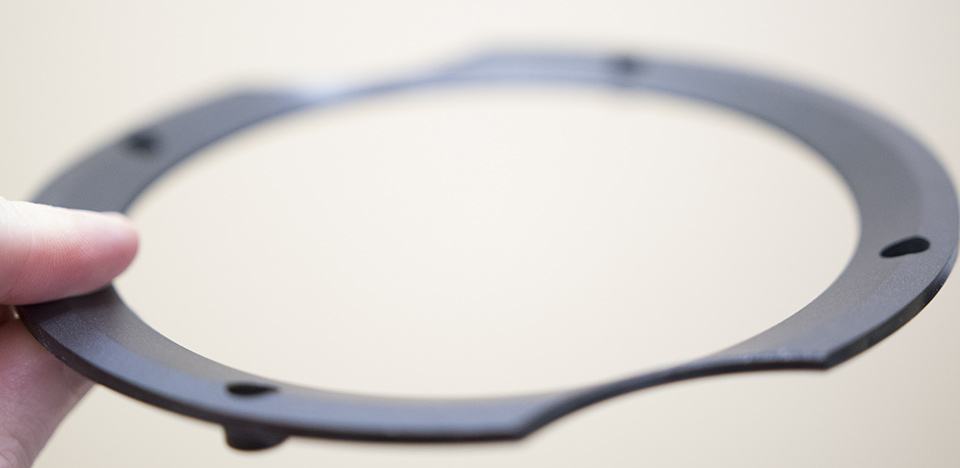
Trim ring is pretty, but super thin and kind of floppy. I could see a case where the fasteners may require tightening up a bit in the future, and you want to be careful to not crack this piece.
Desktop Setup:
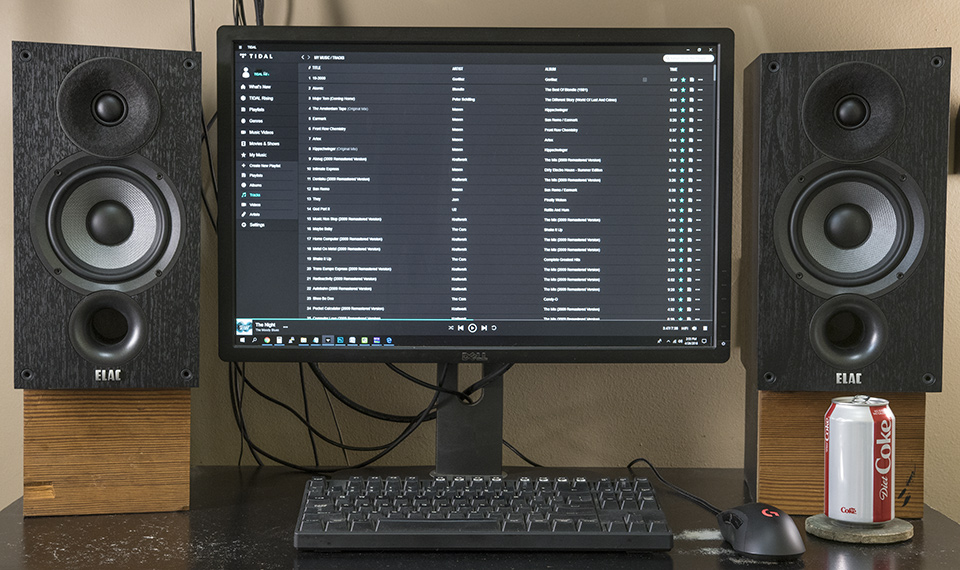
Pay no attention to the fuzzy felt rings around the tweeters - I'll explain those later.
Desktop impressions:
Attempt 1: Stock with/without grills
Setup on Stands, running optical from my computer to the DAC built into the Onkyo home theater in a box receiver.
Very limited bass, and a bass resonance making nasty one note honking occasionally.
Upper mids have a brittle quality to them.
Treble is a hair over done, with or without the tweeter grill, and sounds like a rising response with maybe some diffraction problems.
Drivers low distortion sound is impressive, best in class, no doubt.
Tweeter has some kind of micro detail thing going on, ended up swapping out dacs, amps, and music services trying to track it down - not 100% sure, but might be the tweeter is glued ever so slightly off center to the waveguide.
Directivity is relatively good, still more narrow than I would like, but a bit wider than something like the JBL LSR305. Seems like a good compromise between what I want and what Jones has as a default.
I'm pretty sure people calling this speaker bright are expecting it to perform based on the specs, and there is no way this speaker has anywhere near flat extension to 46Hz as claimed by the specs.
Attempt 2 - Stuff the cabinets with polyfill:
Bass resonance is mostly removed, or it seems that way to my ear.
Other problems remain.
Attempt 3 - Adjust resistor value on the tweeter:
Yeah, I went full retard and tried to adjust the tweeter level to fix the rising response.
This attempt failed in epic fashion. The woofer's crossover would need to be lower if I was going to get this to work properly, because the rise in response starts in the woofers.
The project was scrapped because it would be beyond a simple tweak. I reverted the crossovers back to stock configuration and got nothing but some addition knowledge out of the experiment.
Attempt 4 - Felt rings added to the tweeters to smooth out diffraction:
Unlike the previous attempted tweak, this did net some benefits.
but ended up with the same issues I had with the resistor.
Let's take some measurements:
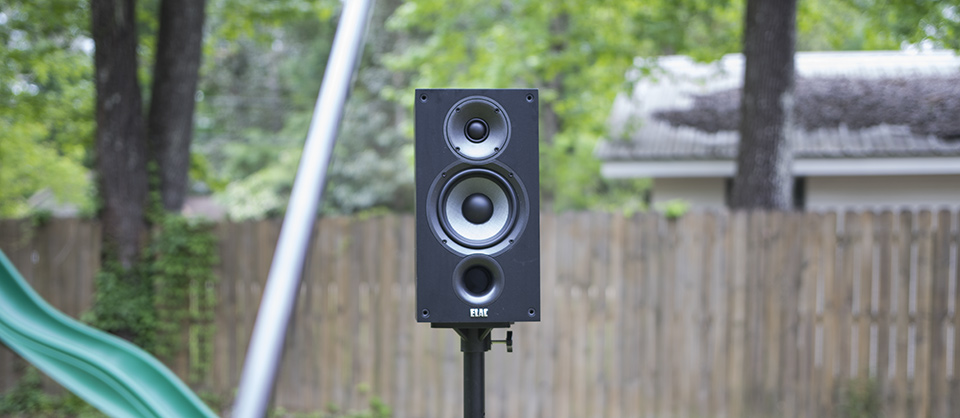
I have shed loads of measurements, from 2.5 degree at a time full rotations vertical, horizontal, and even diagonal as well as many more from mod attempts and numerous ground plane measurements. All were done outdoors and windowed to avoid reflection data. Some are shown below.
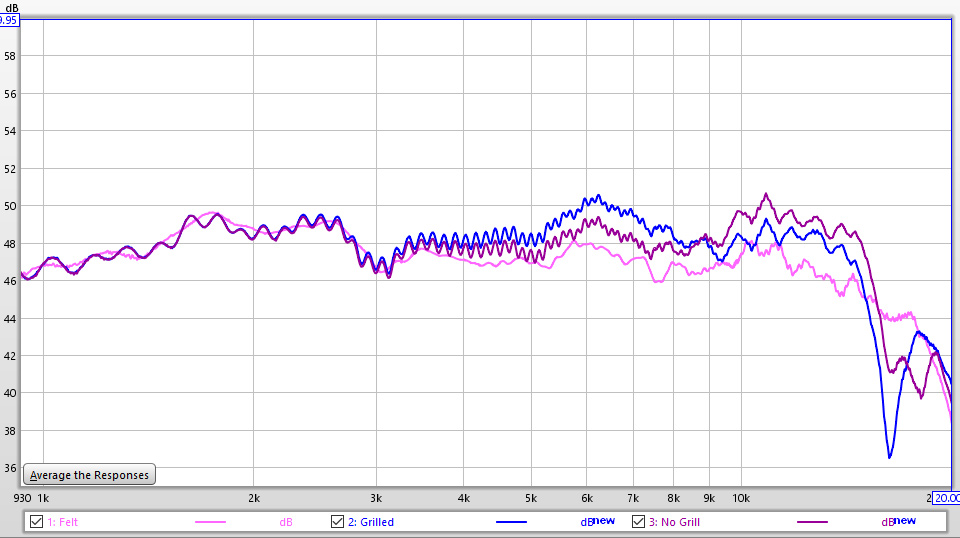
Here we have the upper frequency response as measured with different tweeter arrangements.
Note the lines on this graph are 2dB apart, and my complaints are completely unreasonable for a $250 pair of speakers which are +-2dB throughout the mid and treble frequencies with extremely low distortion drivers.
You can see the climbing response starting from 1kHz - the woofer is to blame for the lower part of the elevated treble.
The tweeter grill makes a nasty spot around 6Khz worse, while rolling off some of the mess in the less audible area above 9Khz.
The felt tweeter ring I designed did knock down the treble level to a more reasonable level,
making the speaker +-1dB on axis outside of the 1.5dB hump at 1kHz coming from the woofer.
Another strange artifact of the felt as smoothing out the measurements, the jaggy results usually seen on my treble measurements are from the sound bouncing off of the front baffle of the speaker
- the little felt got rid most of this, even for the woofer.
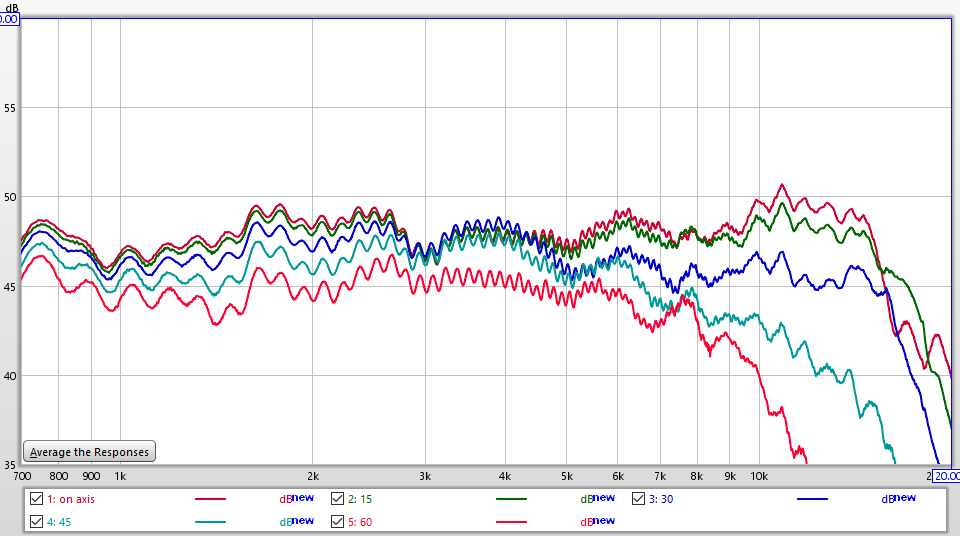
Off axis measurements look pretty good, with only a little bunching around the 4kHz mark. This is probably a limitation of the small waveguide in conjunction with the width of the baffle. In a perfect speaker the on axis response would have a dip here to compensate for the extra off axis energy, and we do see it sitting in a slight dip compared to the rest of the treble.
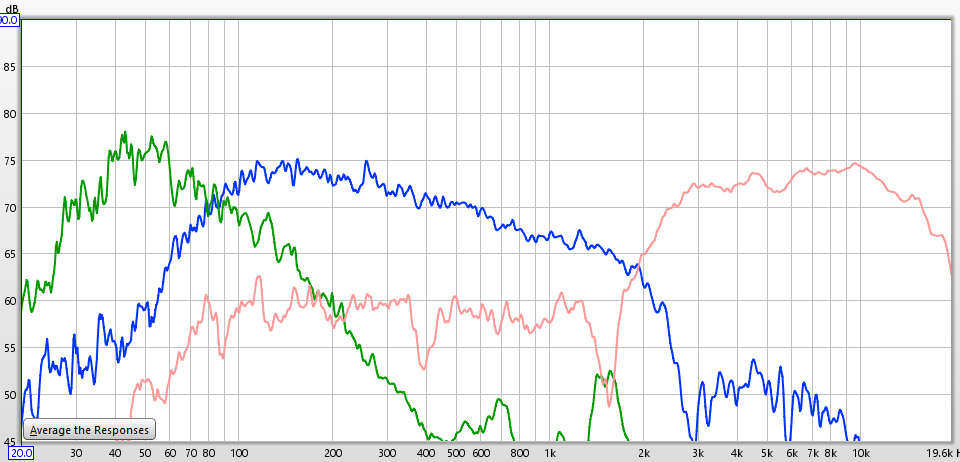
Close mic of the drivers shows the port tuning in green sitting around 45Hz, and the crossover between the tweeter and woofer sitting around 2kHz.
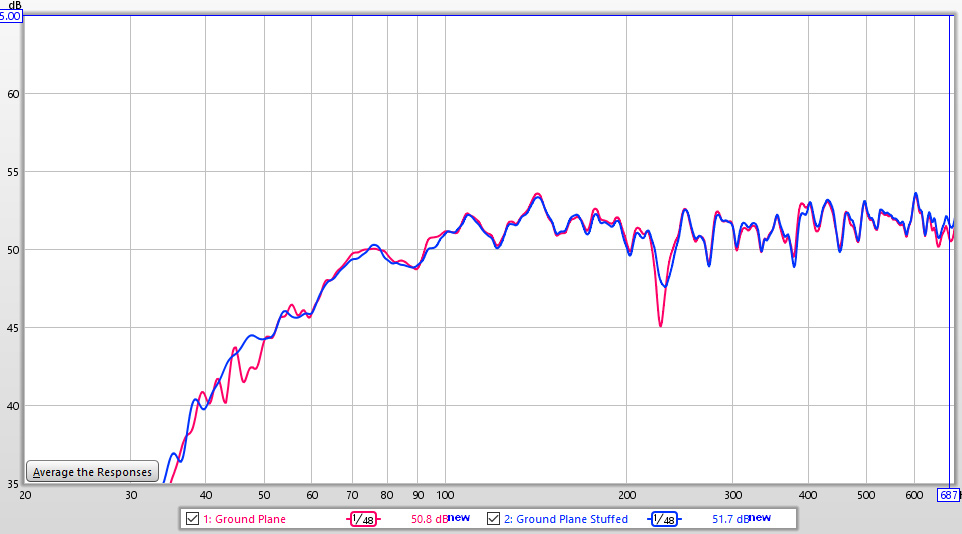
Bass response is abysmal for this speaker with roll off starting around 100Hz, and is 3dB down by 80Hz.
The woofer seems to get no help from the front port in this ground plane measurement.
While the speaker did sound bright and without bass, I was at a loss as to the discrepancy between my close mic measurements and the ground plane.
While sitting outside of my office and having the speakers play with the door cracked I found myself lamenting how much the speakers sounded like shit even when listening from another room.
Then a spark of stupidity struck, and I surmised that a good way to measure the power response of a speaker would be to measure the total reflected energy. If the results are compared to a known neutral speakers performing the same test the tonal problems would be apparent.
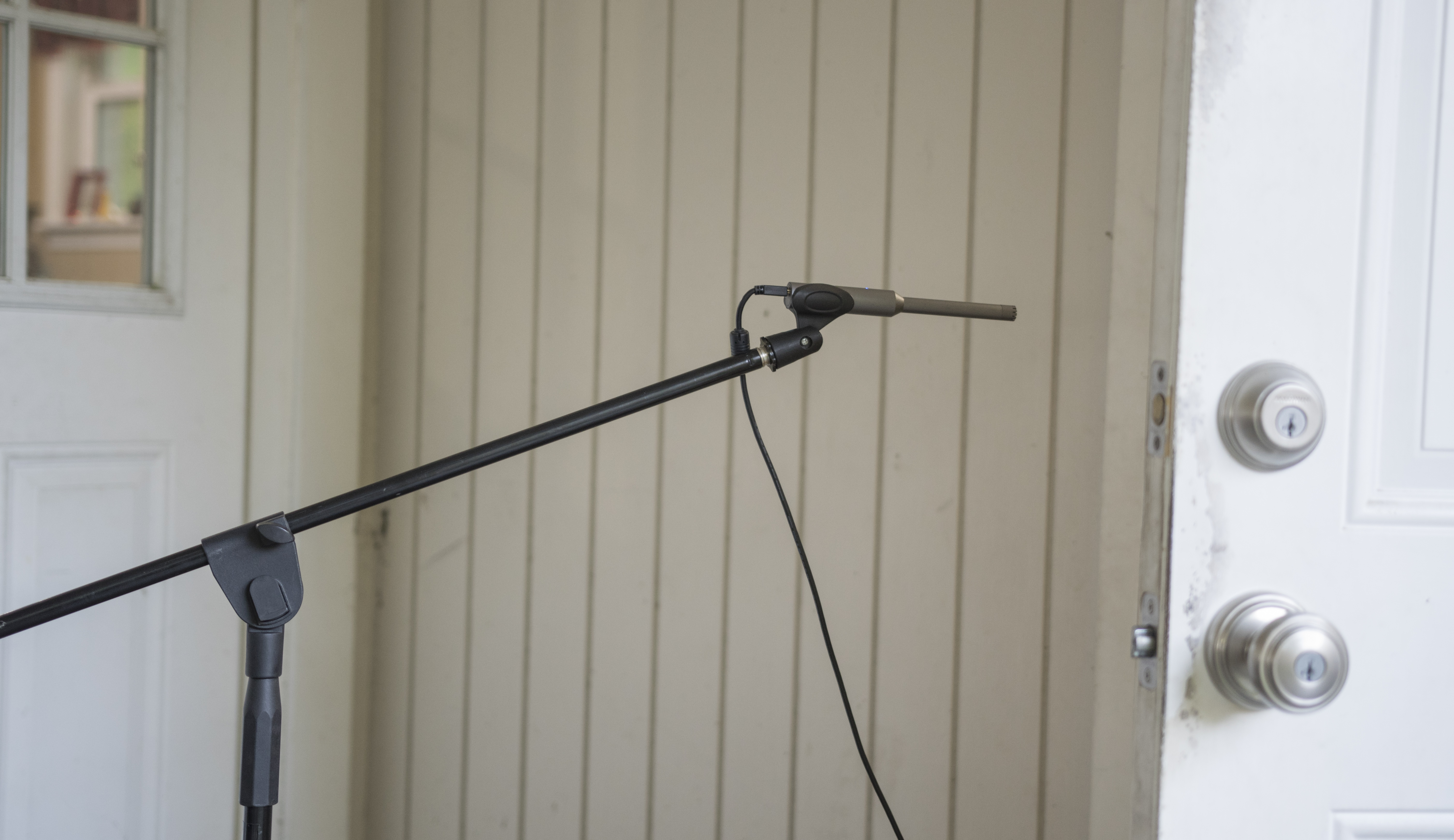
This test is what I call the Redneck Spinorama. A play on the Spinorama test developed by Harman engineers which takes thousands of measurements from every angle by rotating the speaker with a robot arm inside of an anechoic chamber.
The reference speaker(JBL LSR305 set to flat in this case) is set up in a reasonable position, and then measured from a crack in the door. Then the test speaker is set in the exact placement and measured.
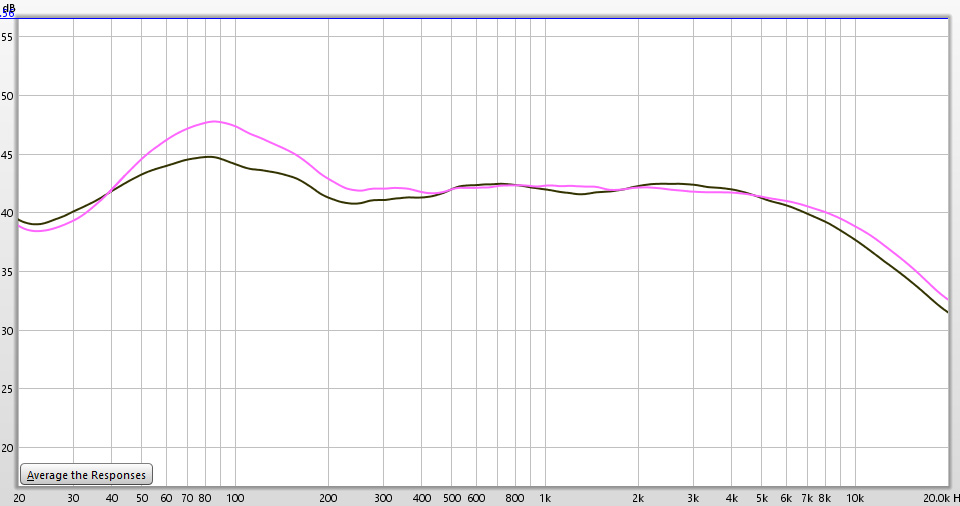
Here are the results, JBL in Pink, ELAC in Black - this is not supposed to be a flat line. The ideal would be that both speakers would have similar total energy. The measurements here have been smoothed 1/1 to get the reflection mess under control and limit the information to tonal differences only.
Obviously the ELAC B5.2's problem with bass is real, and not only that, it starts way up at 450Hz. This information was extremely useful in composing the next graph.
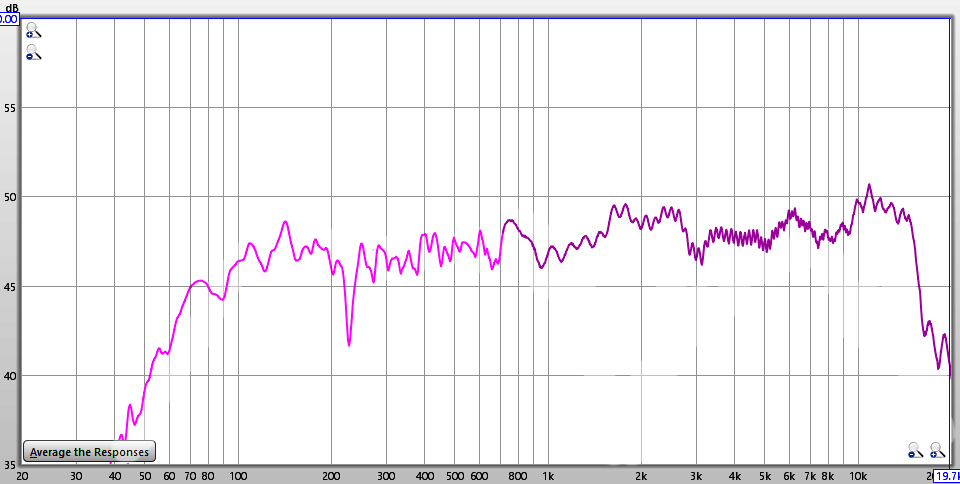
Here we finally get to the measured frequency response, with the Redneck Spinorama data I was able to find the correct level to splice the ground plane bass response data with the windowed outdoor treble measurement.
Now I have enough information to fix these speakers.
DSP Correction:
To get the ELAC B5.2 sounding good you can either turn down the treble knob down on your receiver a little and crossover to a good subwoofer at 80Hz, or use the DSP correction below.
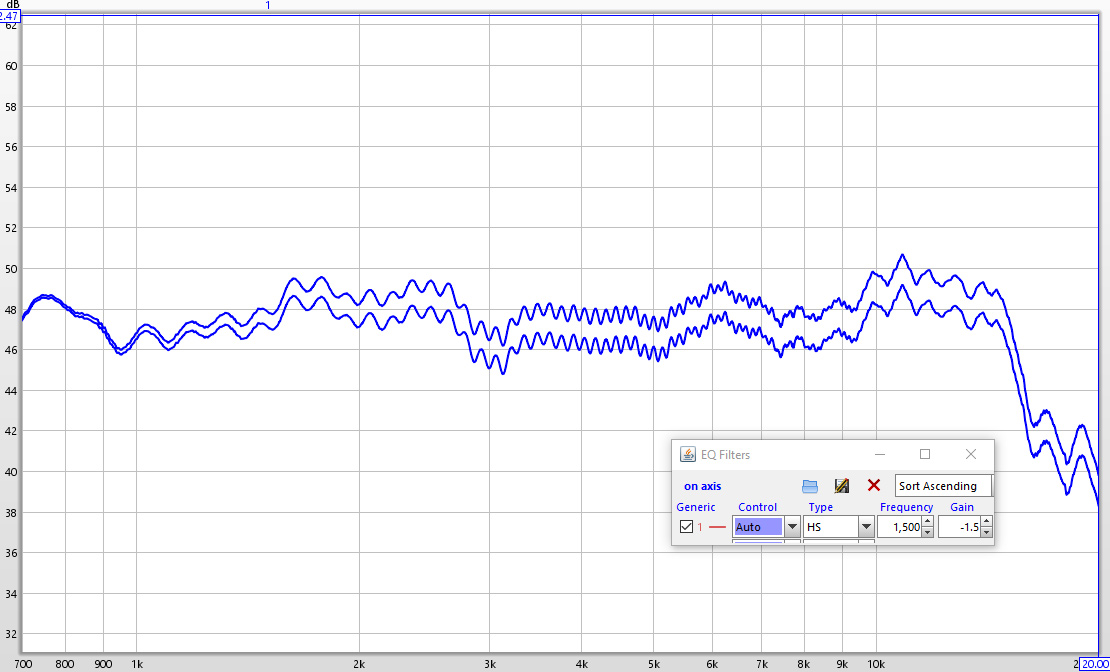
Treble just need to be turned down 1.5dB to be brought into absurd levels of accuracy at +-1dB.
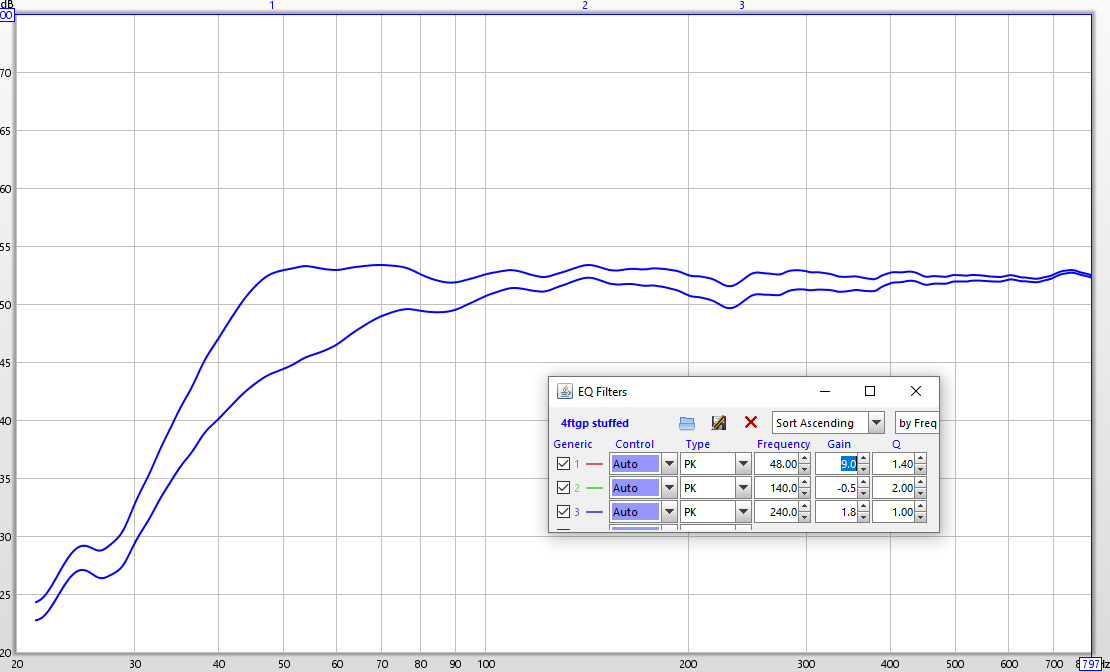
Bass needed total reconstruction. 9dB boost to get flat to 50Hz, which is my minimum requirement for speakers without subwoofers. The cut at 140Hz removes what is probably an artifact of the woofer being in too small of a box. The boost at 240Hz finishes off the flattening of the bass response, but can be ignored or turned down if there is a muffling of vocals which can happen with close boundary placement.
DSP Corrected impressions:
Sounds like a good speaker. It sounds better than any $500 passive speakers I've reviewed.
Final thoughts:

This review was a pain in the ass.
I knew the ELAC B5.2 should sound good based on the changes Jones made to the design, but the lack of bass response and conflicting measurement results lead to me chasing my tail tweaking the treble and measuring every axis imaginable trying to find where the bright sound was coming from.
In the end we got there, and now there is a good speaker to recommend for home theater and other subwoofer inclusive setups.
For the desktop crowd the new Debut are good speakers, but only after DSP correction, and then only on par with many high quality active options. The fight with the B5.2 and the disappointing bass measurements make me less likely to invest time in reviewing small passive home theater speakers for desktop use. Unless I see something that is really promising I will likely stick to reviewing active speakers, which means by default I won't be recommending any new passive speakers for desktop use.
Review Scores:
Compare Reviewed Speakers | Scoring Methodology| Build Quality | |
| Tweeter | 6 |
| Woofer | 5 |
| Cabinet | 5 |
| Features | 5 |
| Crossover | 5 |
| Amp | - |
| Subwoofer | - |
| Score | 5.2 |
| Sound Quality | |
| Neutrality | 7 |
| Bass | 2 |
| Extension | 1 |
| Treble | 5 |
| Midrange | 5 |
| Headroom | 6 |
| Dispersion | 6 |
| Detail | 7 |
| Imaging | 6 |
| Score | 5.0 |
| DSP Sound Quality | |
| Neutrality | 9 |
| Bass | 6 |
| Extension | 5 |
| Treble | 6 |
| Midrange | 7 |
| Headroom | 6 |
| Dispersion | 6 |
| Detail | 7 |
| Imaging | 6 |
| Score | 6.4 |
Click here to buy the ELAC B5.2 speakers.
Click here to get the DSP Correction file for the ELAC B5.2 speakers.
Other content you may like:
- Vanatoo Transparent One Review - Software update brings new standard of performance!
- Lone Star Audio Fest 2018 - Staying up late, drinking too much, smoking like chimneys!
- Andrew Jones goes back the be begining, ELAC B5.2 Debut 2.0 Review is up!
- New Scores for all reviewed speakers - Compare and sort for fun!
- Creative Sound Solutions DIY Solution for the high end - CSS Criton 1TD v2 review is up!
- Dayton Makes a Budget Desktop speaker with a crossover - Dayton Audio MK402 review is up!
- Smaller than small, deeper than deep - iLoud Micro Monitor review is up!
- Vanatoo's new speaker, The Transparent Zero review is up!
- SVS Prime Bookshelf Review is now available for your viewing pleasure
- ELAC A-Stock UB5 Listening Impressions are up!
- 30 years in the making, the ancient Bose 901 finally gets measured - The Bose 901 review is up!
- Lock and load, we are hitting the bottom of the barrel with both barrels - The Logitech z313 review is up!
- Bulletproof speakers... No, it's just the B&W 686 S2 Review!
- Declare independence from the British sound! - The KEF Q300 review is up!
- Recommended System Finder - Just in time for the Holidays!
- JBL LSR308 Studio Montor - Super Massive Epic Review!
- Two years after starting this site I finally get around to talking about my stereo.
- Small and cheap speakers transform into retarded and good... Micca COVO-S Review!
- AMT tweeter on a B652? The Dayton B652-AIR is reviewed for great justice!
- JBL LSR305 Studio Monitor Review!
- Zu Essence Review!

